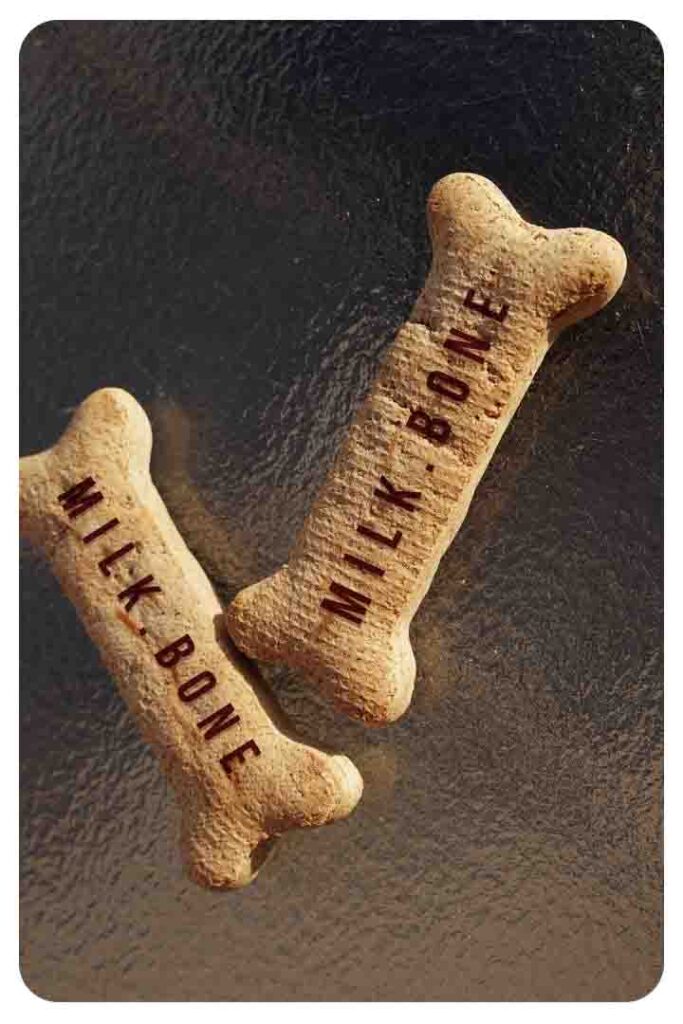Even though training your dog is challenging enough, most dog owners will agree that it would be significantly more challenging without milk bones.
This is a technique for rewarding your dog after they have finished a trick or maneuver to encourage them to repeat it.
The best training method for dogs is milk bones because they can help them develop their senses of taste and smell. They support their ability to learn new tricks and their chewing abilities.
There are alternative ways to reward your dog if you don’t want to use milk bones. When they complete a task, you can easily reward them with a treat.
But if you frequently give your dog these treats throughout its life, you might be concerned about how it might affect their health. Cow’s milk that has been processed into powder form is used to make milk bones.
Consequently, it contains lactose, a sugar that can be found in milk. This sugar is what makes milk bones so well-liked by dog owners.
Continue reading this article to learn everything there is to know about milk bones.
Can Milk Bones Upset Your Dog’s Stomach?
You should act right away if you notice that your dog has issues after eating his milk bones. He could be suffering from indigestion or constipation.
These conditions can often be treated at home. If your dog experiences constipation, make an effort to get them to consume more fiber-rich foods, such as grasses and hay.
But the truth is that feeding dogs milk bones in large amounts will only result in diarrhea. You can simply cut back on the daily serving size of milk bones if you notice that your dog is experiencing diarrhea as a result.
How Much Should I Feed My Dog A Day?
Depending on how big he is, you should feed your dog a certain amount. For illustration, a medium-sized dog might consume three to four ounces daily.
How frequently your dog should consume his milk bone treat will depend on his size. Smaller dogs tend to eat more frequently than larger dogs.
As a general rule, feed him once every few hours. Therefore, if he eats at 8 am, he should likely eat again at 4 pm. Always keep an eye on your dog’s appetite to determine when he appears to need another snack.
Are Milk Bones Bad For Dogs?
We must examine what goes into milk bones more closely in order to provide an answer to this question. Unsurprisingly, they get their name from the fact that they contain a significant amount of cow’s milk, but that isn’t the main component. If you read the list of ingredients on the Milk-Bone box’s back, you’ll see that it also includes.
The recent addition of vitamins and minerals is part of an effort to reposition Milk-Bones as an important component of a healthy lifestyle rather than just a treat. And the majority of dogs won’t experience any negative side effects from consuming Milk-Bones as long as their daily treat consumption is less than 10% of their total calorie intake and the remaining 90% of their diet is age- and nutritionally-appropriate.

FAQ
How many milk bones can a dog eat a day?
Feed your dog 1 to 5 biscuits daily as part of his or her regular diet. Per 3–4 lbs of your dog’s body weight, give one biscuit.
Can my dog eat too many Milk Bones?
In general, the three main components of Milk-Bone—wheat, beef, and milk—don’t harm dogs when consumed in moderation. However, dogs who are allergic to any of these ingredients could react poorly to Milk-Bones, including but not restricted to: Diarrhea. Itching.
Can Milk Bones make dogs sick?
While a milk bone allergy rarely results in harm, in some dogs, it can result in anaphylaxis, a condition where the airways swell and the dog becomes unable to breathe. If you notice your dog wheezing or having breathing difficulties, you should visit an animal hospital right away because this is a rare but serious condition.
What happens if my dog eats too many treats at once?
As a general rule, you should limit treats to no more than 10% of your dog’s daily caloric intake. Overindulging may result in stomach problems (and unsanitary stools) in the short term and weight gain in the long run. Due to the fact that obesity is arguably the No. 1 cause of serious health issues in dogs,
